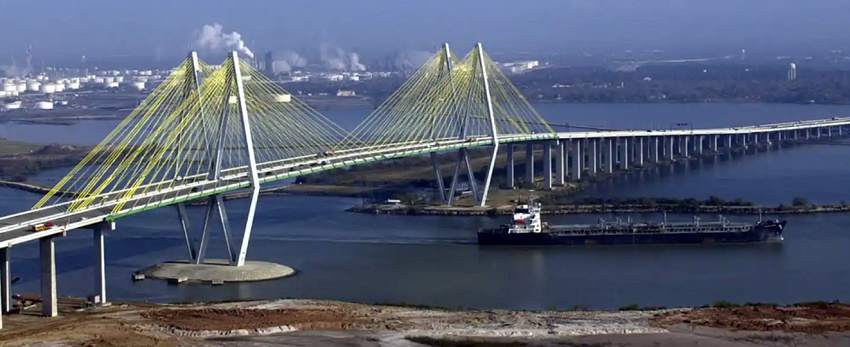The EPA’s Quad Zero Emissions Regulations and Potential Impact on Houston Ship Channel Industries

The U.S. Environmental Protection Agency's (“EPA”) Quad Zero emissions regulations have been designed to significantly reduce greenhouse gas emission. They will have far-reaching implications for heavy industries, particularly those operating in and near maritime environments. The Houston Ship Channel, the largest U.S. port on a tonnage basis and a vital artery for the nation's energy industry, is a prime example of a region where these regulations will have a substantial impact.
Understanding the Quad Zero Regulations
These regulations impose rigorous limits on methane and volatile organic compound (“VOC”) emissions. The Quad Zero regulations are a set of standards aimed at reducing greenhouse gas emissions from the oil and gas sector and encompass four primary areas:
- Quad O: Applies to new, reconstructed, and modified sources added between August 23, 2011, and September 18, 2015.
- Quad Oa: Applies to sources added, modified, or reconstructed between September 18, 2015, and November 15, 2021.
- Quad Ob: Applies to sources added, modified, or reconstructed after November 15, 2021.
- Quad Oc: Emissions Guidelines for existing sources.
The Impact on Heavy Industries along the Houston Ship Channel
The Quad Zero regulations have significant implications for heavy industries, such as refiners, petrochemical and specialty chemical companies, operating near the Houston Ship Channel. These industries are major contributors to greenhouse gas emissions, and compliance with the regulations will require substantial investments in new technologies and operational changes.
- Increased Costs: Implementing the Quad Zero regulations will involve significant capital expenditures to upgrade existing facilities, install new equipment, and to train personnel. These costs could lead to higher production costs for refining and petrochemical companies, which could ultimately be passed on to consumers in the form of higher prices for gasoline, diesel fuel, chemicals, and other produced products.
- Technological Challenges: The regulations require the adoption of advanced technologies to capture and reduce greenhouse gas emissions. This may be particularly challenging for older manufacturing facilities that require extensive retrofitting or replacement. In some cases, the development of new technologies, and their adoption, may be necessary to meet the stringent emission standards.
- Regulatory Uncertainty: The regulatory landscape can be complex and subject to change. The Quad Zero regulations, while providing a clear direction for emissions reduction, may also create uncertainty for businesses as they navigate the implementation process. Changes in regulations or enforcement could lead to additional costs and operational challenges.
- Competitive Disadvantages: The implementation of the Quad Zero regulations may create competitive disadvantages for U.S. refineries and petrochemical companies compared to those operating in countries with less stringent environmental regulations. This could lead to increased imports and a potential loss of jobs.
The Houston Ship Channel and Maritime Operations
The Houston Ship Channel is a vital transportation corridor for the energy industry and is home to numerous refineries and petrochemical manufacturing plants, gas processors as well as terminal and pipeline operators. The Quad Zero regulations will have a direct impact on these facilities, as they will need to comply with the emission standards to continue operating.
Maritime Transportation: The regulations may also have implications for maritime transportation in the region. As refineries and petrochemical plants implement measures to reduce emissions, there may be changes in the types of vessels used and the fuels they consume. This could have an impact on port of Houston infrastructure and shipping operations.
Supply Chain Disruptions: The implementation of the Quad Zero regulations could lead to temporary disruptions in the supply chain as facilities undergo upgrades or modifications. This could affect the availability of refined products and petrochemicals, potentially impacting downstream industries.
Balancing Environmental Goals and Economic Growth
The Quad Zero regulations represent a significant step forward, addressing climate change. However, it is essential to balance environmental goals with economic growth and job creation expectations. The implementation of the regulations should be carefully managed to minimize disruptions to the economy and ensure a reasonable and achievable transition for affected industries.
It is expected that the EPA's Quad Zero emissions regulations will have a substantial impact on heavy industries. While these regulations are necessary to address climate change, they will also present significant operational and financial challenges for these businesses. By carefully evaluating, planning and implementing the regulations, policymakers can help ensure a smooth transition and minimize the negative economic consequences. In some instances, compliance with the Quad Zero regulations might be viewed as a competitive advantage for customers that value strong climate change policies from their vendors. Compliance might also be seen as a useful recruiting tool for companies seeking employees that share that same commitment to best environmental practices.
About the Author

David Smith
Business Developer Director
Oxford Flow
david.smith@oxfordflow.com
